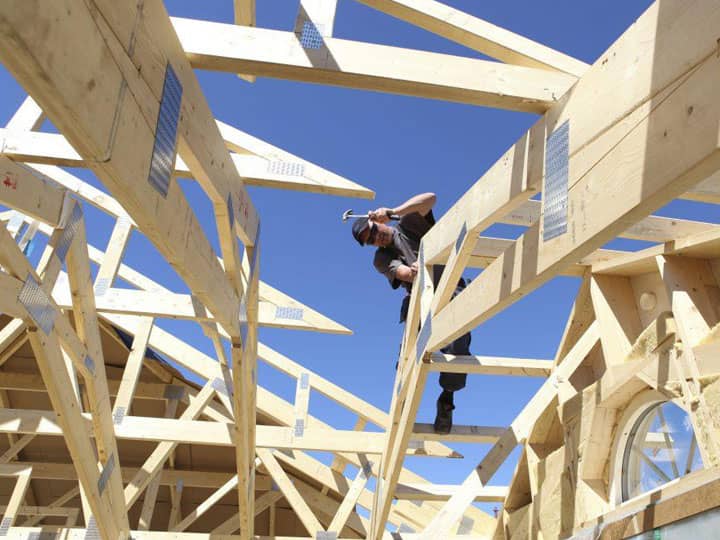
Timber Roof Frame
Author: Jewel Cameron
Date: 26th September, 2020
The concepts of Timber and its uses, as one of the main construction materials widely used in the building industry for buildings and civil engineering construction works, furniture a complete finishing for domestic purposes. This research aimed at studying the various uses of timber as an important element generally in the industry.
The knowledge, awareness, and sustainability of timber in construction industry, has a positive effective impact in the industry. With the benefits of timber being more widely recognised, its properties, aesthetics and workability experts are starting to consider whether timber could replace concrete and steel for mid and high-rise buildings in the near future.
Timber offers an inspirational alternative construction solution. Timber is used as a generating economic and environment valuable material.
Timber for construction is one of the many forest products used around the world. It is used for buildings both large and small, heavy construction such as bridge, pile, wharf etc. It is widely and considered for the construction of buildings of four or more storeys. Timber with its properties when designed efficiently can be used for much larger buildings and civil engineer works. There is ample global supply for timber in the market for the future. Although there is a worldwide trend towards deforestation, it is generally due to clearing land for agriculture purpose and logging for timber.
Timber is generally the type of material which has can be processed into beams, planks and boards. It is also known as lumber in many countries, Timber or Lumber is a derived from trees. It is cut and shape in various dimension sizes, in the process of wood production. Timbers are used for the structural and non-structural purpose. Timber which are used for building purposes are said to be finished timber, it is made and supplied in standard sizes for domestic, commercial and industrial. Timber is used widely for building houses, making furniture, structural members for building and civil engineering construction such as Piles, Beams, Post, Roof. In the Gothic Architectural age, timber was for Foundation.
There is high demand for timber especially as a building and furniture material Some tropical countries depend largely for timber as one main source of export, obtaining market shares and most importantly as income economic generating revenue. With these numerous uses, timber is considered as one of the important construction materials.
The quality of timber is essential, can be ensured by investigating the properties. According to both physical and mechanical properties, can determine its quality.
Best quality timbers have the highest strength, this, means it capable to bear loads. Timber Material has different strength at the different position. So, the strength of timber is different at various points. Grain structure determines the strength of the timber.
Here is some element that defines the properties of timber strength.
Compressive strength of timber 500 kg/cm2 - 700 kg/cm2 load is enough to test timbers strength
When perpendicular strength is applied, timber should not be weaker. 500-2000 kg/cm2 in the strength load.
Transverse strength is enough bending strength indicates good quality timber.
Timber having higher density and thicker wall is an important property of good quality timber. Moisture content is essential for defects, there is some of the natural and artificial defects in timber such as cross-grain, knots, and shakes. All of these cause a decrease in the strength of the timber.
Toughness of timber must have the capability to bear shocks, jerk, splitting characteristic is not good. Old timbers have annual rings which indicate their age is a good indicator.
Durability of good quality timber has the property to resist the attack of infection, fungus, insects etc. It makes timber better.
Defect- less trees that is free from sap, shakes, and knots, is considered as good quality of timber
Workability of timber is always easy to work with, it always easy when using saw on it, gives a complete finishing's.
A good timber building material must always subject to environmental change, with seasonal conditional, should not affect the quality of timber.

PGDCM PGDSM PGCPM MQSI SACD